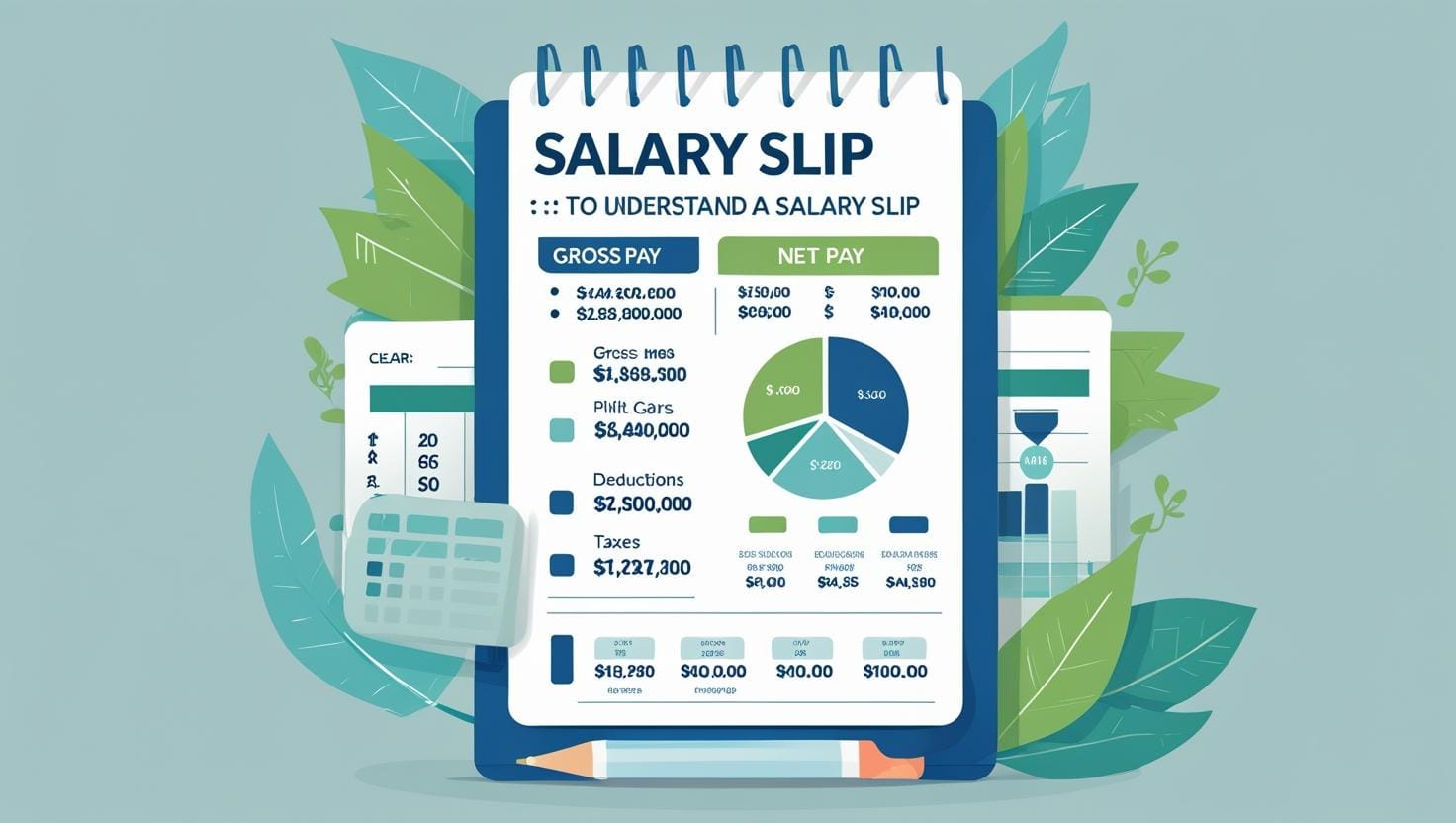How to Understand Your Salary Slip – In Simple Words
Confused by your salary slip? Here's a beginner-friendly guide to understanding what all those terms like HRA, PF, and TDS really mean — and how they affect your money.

If you’re earning a salary, you’re probably getting a salary slip every month.
But let’s be honest — most of us just check the “in-hand” amount and ignore the rest.
Words like Basic, HRA, LTA, TDS, PF make it sound like a puzzle.
But your salary slip holds important info that affects:
- Your taxes
- Your savings
- Even your loan approval!
So let’s break it down — simply, clearly, and in real-world terms.
📄 What Is a Salary Slip?
A salary slip (or payslip) is a document your employer gives you every month.
It shows:
- What you earned
- What was deducted
- And what landed in your bank account
It’s also your proof of income — useful for:
- Applying for loans
- Filing income tax
- Visa processing
- Job changes
Salary Slip = Earnings – Deductions
Let’s understand both parts clearly:
💰 Part 1: Earnings (Your Gross Salary)
This is what your company “promises” on paper. It includes:
1. Basic Salary
- Usually 40–50% of your gross pay
- Forms the base for other components (like PF, HRA)
- Taxable
Example: If your gross salary is ₹30,000 → basic may be ₹12,000
2. HRA (House Rent Allowance)
- Given if you live in a rented house
- Can save tax (if you submit rent receipts)
🧠 You can claim tax exemption on part of it.
3. Special Allowance / Flexi Pay
- Whatever’s left after basic, HRA, etc.
- Fully taxable
- Can sometimes be optimized for tax benefits (food coupons, phone bill, etc.)
4. LTA (Leave Travel Allowance)
- Given for travel inside India
- Tax-free only if you submit travel proofs
5. Bonus / Performance Pay
- Not fixed — depends on your performance/company performance
- Usually paid quarterly or yearly
- Fully taxable
❌ Part 2: Deductions (What Gets Cut)
1. EPF (Employee Provident Fund)
- 12% of your basic salary
- Goes into your PF account (savings for retirement)
- Employer also contributes 12% (but it's not shown in hand salary)
🧠 It's Safe, interest-earning savings — and partially tax-free when withdrawn.
2. TDS (Tax Deducted at Source)
- Advance tax paid on your behalf by your employer
- Depends on your total annual income + declarations
🧠 You can reduce this by declaring 80C investments, HRA, and other exemptions at the beginning or before the start of the financial year.
3. Professional Tax (some states only)
- Small monthly tax (₹200 max) levied by state government
🧮 Net Salary (In-Hand Salary)
Net Salary = Gross Salary – Deductions
🧠 That’s the final amount you see in your bank account each month.
📊 Example Salary Slip Breakdown (₹30,000 gross)
| Component | Amount (₹) |
|---|---|
| Basic | ₹12,000 |
| HRA | ₹6,000 |
| Special Allowance | ₹10,000 |
| Gross Salary | ₹30,000 |
| EPF (12%) | ₹1,440 |
| TDS | ₹500 |
| Professional Tax | ₹200 |
| Total Deductions | ₹2,140 |
| Net In-Hand Salary | ₹27,860 |
🔍 Why Understanding This Matters
- Helps you plan tax-saving better (HRA, 80C, LTA)
- Lets you compare offers smartly when switching jobs
- Improves your financial awareness and salary negotiations
- Prepares you to answer HR or CA questions smartly
⚠️ Common Mistakes People Make
- Ignoring PF → it's your hidden savings
- Not submitting rent/travel proofs → lose tax benefits
- Thinking in-hand = total salary → bad for job comparison
- Not asking HR for full CTC breakup → you miss hidden deductions
💬 Final Thoughts
Your salary slip isn't just a formality — it’s a financial mirror.
Understanding it helps you:
- Save more tax
- Plan better
- And feel in control of your money
Start by reading your next payslip line by line — you’ll be surprised how much power it holds.
📢 Coming Soon:
Free “Salary Slip Explainer Sheet” you can download — perfect for freshers and job changers.
Subscribe to get it in your inbox.
This post is for educational purposes only and should not be considered financial advice.
